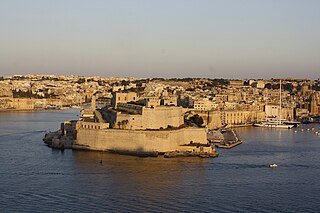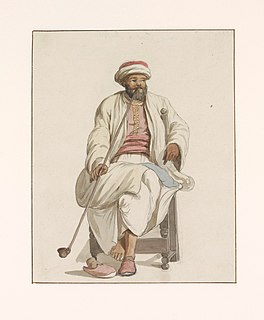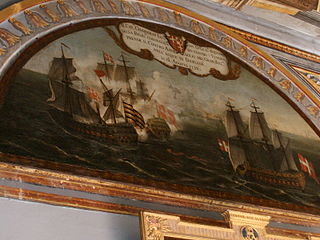Related Research Articles

A slave rebellion is an armed uprising by enslaved people, as a way of fighting for their freedom. Rebellions of enslaved people have occurred in nearly all societies that practice slavery or have practiced slavery in the past. A desire for freedom and the dream of successful rebellion is often the greatest object of song, art, and culture amongst the enslaved population. Many of the events, however, are often violently opposed and suppressed by slaveholders.

The Battle of Lepanto was a naval engagement that took place on 7 October 1571 when a fleet of the Holy League, a coalition of Catholic states arranged by Pope Pius V, inflicted a major defeat on the fleet of the Ottoman Empire in the Gulf of Patras. The Ottoman forces were sailing westward from their naval station in Lepanto when they met the fleet of the Holy League which was sailing east from Messina, Sicily. The Spanish Empire and the Venetian Republic were the main powers of the coalition, as the league was largely financed by Philip II of Spain, and Venice was the main contributor of ships.

The Barbary pirates, or Barbary corsairs or Ottoman corsairs, were Muslim pirates and privateers who operated from North Africa, based primarily in the ports of Salé, Rabat, Algiers, Tunis, and Tripoli. This area was known in Europe as the Barbary Coast, in reference to the Berbers. Their predation extended throughout the Mediterranean, south along West Africa's Atlantic seaboard and into the North Atlantic as far north as Iceland, but they primarily operated in the western Mediterranean. In addition to seizing merchant ships, they engaged in Razzias, raids on European coastal towns and villages, mainly in Italy, France, Spain, and Portugal, but also in the British Isles, the Netherlands, and Iceland. The main purpose of their attacks was to capture slaves for the Ottoman slave trade as well as the general Arab slavery market in North Africa and the Middle East. Slaves in Barbary could be of many ethnicities, and of many different religions, such as Christian, Jewish, or Muslim.

Occhiali was an Italian farmer, then Ottoman privateer and admiral, who later became beylerbey of the Regency of Algiers, and finally Grand Admiral of the Ottoman fleet in the 16th century.

The Third Battle of the Dardanelles in the Fifth Ottoman-Venetian War took place on 26 and 27 June 1656 inside the Dardanelles Strait. The battle was a clear victory for Venice and the Knights Hospitaller over the Ottoman Empire, although their commander, Lorenzo Marcello, was killed on the first day.

The action of 3 October 1624 was a naval engagement that took place near San Pietro Island, Sardinia, during the war against the Barbary corsairs. A squadron of galleys from the Spain, Grand Duchy of Tuscany and Papal States under Diego Pimentel engaged a squadron of six Algerian ships under Azan Calafate. The Algerians were defeated, their flagship was destroyed, and four ships were captured. Also, the Christian slaves they owned were freed.

A galley is a type of ship that is propelled mainly by oars. The galley is characterized by its long, slender hull, shallow draft, and low freeboard. Virtually all types of galleys had sails that could be used in favorable winds, but human effort was always the primary method of propulsion. This allowed galleys to navigate independently of winds and currents. The galley originated among the seafaring civilizations around the Mediterranean Sea in the late second millennium BC and remained in use in various forms until the early 19th century in warfare, trade, and piracy.

The Battle of Malta took place on 8 July 1283 in the entrance to the Grand Harbour, the principal harbour of Malta, as part of the War of the Sicilian Vespers. An Aragonese fleet of galleys, commanded by Roger of Lauria, attacked and defeated a fleet of Angevin galleys commanded by Guillaume Cornut and Bartholomé Bonvin.
A galley slave is a slave rowing in a galley, either a convicted criminal sentenced to work at the oar, or a kind of human chattel, often a prisoner of war, assigned to the duty of rowing.

The Battle of Djerba took place in May 1560 near the island of Djerba, Tunisia. The Ottomans under Piyale Pasha's command overwhelmed a large joint Christian Alliance fleet, composed chiefly of Spanish, Papal, Genoese, Maltese, and Neapolitan forces. The allies lost 27 galleys and some smaller vessels as well as the fortified island of Djerba. This victory marked perhaps the high point of Ottoman power in the Mediterranean Sea.

The Conquest of Tunis in 1535 was a successful capture of Tunis, then under the control of the Ottoman Empire, by the Habsburg Empire of Charles V and its allies.

The siege of Tripoli occurred in 1551 when the Ottoman Turks and Barbary pirates besieged and vanquished the Knights of Malta in the Red Castle of Tripoli, modern Libya. The Spanish had established an outpost in Tripoli in 1510, and Charles V remitted it to the Knights in 1530. The siege culminated in a six-day bombardment and the surrender of the city on 15 August.

Dragut, known as "The Drawn Sword of Islam", was a Muslim Ottoman naval commander, governor, and noble, of Turkish or Greek descent. Under his command, the Ottoman Empire's maritime power was extended across North Africa. Recognized for his military genius, and as being among "the most dangerous" of corsairs, Dragut has been referred to as "the greatest pirate warrior of all time", "undoubtedly the most able of all the Turkish leaders", and "the uncrowned king of the Mediterranean". He was described by a French admiral as "A living chart of the Mediterranean, skillful enough on land to be compared to the finest generals of the time. No one was more worthy than he to bear the name of king".

The Bazana was a galley which was a part of the Spanish Armada of 1588. It played a minor and relatively unremarkable part in the campaign: whilst passing through the Bay of Biscay the fleet was hit by a tempest, forcing the four lightly built ships of the galley squadron to take shelter in French ports. One galley, the Diana, ran aground in the harbour entrance at Bayonne, but the crew, including the galley slaves who rowed the ship, were rescued; the Bazana and the other two ships took around ten days to repair their storm damage, and subsequently returned to Spain.

The Battle of Girolata was a naval action fought between Genoese, Spanish, and Ottoman ships on 15 June 1540 in the Gulf of Girolata, on the west coast of the island of Corsica, amidst the war between Charles V of Spain and Suleiman the Magnificent. A Spanish squadron of 21 galleys led by the Genoese Gianettino Doria and the Spaniard Berenguer de Requesens surprised an Ottoman squadron of 11 galleys, anchored at Girolata, led by the Ottoman admiral Dragut, whom the commander of the Ottoman Navy, Hayreddin Barbarossa, had committed to raid the Italian coast after his victories in the Adriatic sea the year before. As the crews of the Ottoman warships were ashore, distributing the booty from recent raids, the Spanish-Genoese fleet easily overtook them, taking all 11 Ottoman galleys and making 1,200 prisoners, among them Dragut, who was carried to Genoa and put, together with his captains, to row in Andrea Doria's galleys.

The Conspiracy of the Slaves was a failed plot by Muslim slaves in Hospitaller-ruled Malta to rebel, assassinate Grand Master Manuel Pinto da Fonseca and take over the island. The revolt was to have taken place on 29 June 1749, but plans were leaked to the order before it began; the plotters were arrested and most were later executed.

Slavery in Malta existed and was recognised from classical antiquity until the early modern period, as was the case in many countries around the Mediterranean Sea. The system reached its apex under Hospitaller rule, when it took on unprecedented proportions, largely to provide galley slaves for the galleys of the Order, as well as other Christian countries. Commerce raids, which were the backbone of the Knights' economic military system helped to maintain this system, partly through creating the demand for slaves to maintain the military fleet, but also due to the influx of Muslim prisoners when battles were won. Thus Malta became the hub of slavery in Christian Europe. Slavery was abolished in Malta by Napoléon Bonaparte during his invasion of the Maltese archipelago on 16 June 1798.

The Slaves' Prison officially known as the Grand Prison and colloquially as the bagnio, was a prison in Valletta, Malta. It was established in the late 16th century, and remained in use as a prison throughout the 17th and 18th centuries. It was subsequently used as a naval hospital, a school and an examination hall. It was bombed in World War II, and the ruins were demolished to make way for a block of flats.
The Corona Ottomana was an Ottoman galley ship known for being the site of a slave revolt by Christian slaves in 1760.

The naval battle of Damietta was fought on 16 August 1732 between the ships of a convoy of the Ottoman Empire and a small fleet of the Order of Malta under the command of Jacques-François de Chambray, off the coast of Damietta, Egypt. The Order emerged victorious and managed to liberate the Christian slaves held by the Ottomans.
References
- ↑ Cassar, Paul (1965). Medical History of Malta. London: Wellcome Historical Medical Library. p. 119. OCLC 1024674452.
- ↑ Castillo, Dennis Angelo (2006). The Maltese Cross: A Strategic History of Malta. Greenwood Publishing Group. pp. 90–91. ISBN 9780313323294.